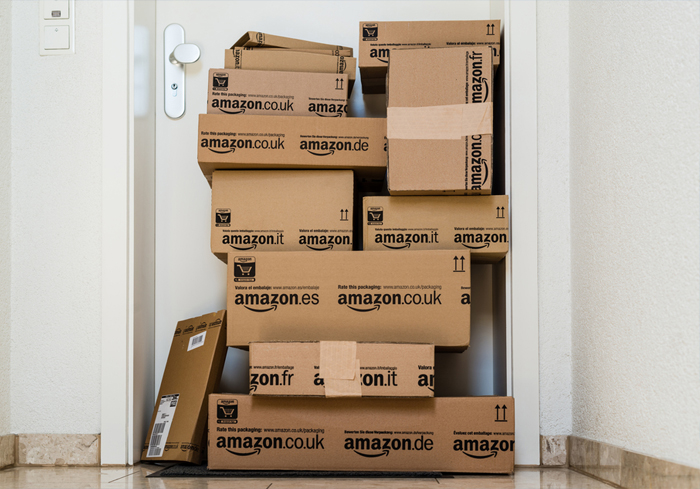Amazon’s Quarter Is So Bad The NYTimes Is Making Fun Of It

It’s not easy to justify to investors how you can make $20 billion in revenue and still lose money, but that’s the question Amazon CFO Tom Szkutak had to answer repeatedly when defending Amazon’s vision for growth.
Amazon’s third-quarter earnings released Thursday (Oct. 23) showed the company reported an operating loss of $544 million, despite having $20.58 billion in sales. The loss is more than 20 times that of the $25 million in last year’s third-quarter earnings and is expected to grow to $570 million next quarter.
But longtime Amazon shareholders—and the analysts who ultimately work for them—have seen lots of Amazon losses over the years. The historical difference is that those losses have generally accompanied very strong revenue spikes, massive marketshare and successful penetration into a huge number of product segments. That is what has allowed the company to plausibly argue that the losses were a result of wise investments, rather than weak management.
Thursday’s details showed a steep drop in that fabled revenue, which is what really angered investors.
“Revenue came in $260 million less than analysts’ projections, and the company said it might lose money again in the fourth quarter, which in the old days was when retailers made all their profit for the year,” said The New York Times. “Even revenue growth, Amazon’s powerhouse, is fading a bit. The company said revenue would rise between 7 percent and 18 percent in the fourth quarter. In the fourth quarter of 2013, revenue rose 20 percent from 2012.”
When questioned by an analyst about how Amazon can keep the faith of investors with continual losses, Szkutak said he’s looking at metrics over a long period of time, saying the company “has been in several years of investor mode.” He kept his comments to vague references about long-term investments, and shifted focus to areas like Amazon’s enthusiasm for its product growth in tablets and the company’s global enterprise market growth.
As for other earnings figures, Amazon operating cash flow increased 15 percent to $5.71 billion for the year, compared to $4.98 billion in 2013. Free cash flow increased to $1.08 billion during the same time this year, compared to $388 million in 2013. The favorable impact for next sales that brought the 20 percent jump came from favorable foreign exchange rates during the quarter on net sales of $13 million. Net loss for Amazon was $437 million, or $0.95 per diluted share, compared with a net loss of $41 million in the third-quarter of last year. Net sales for fourth-quarter earnings are expected to be between $27.3 billion and $30.3 billion, a growth of 7 percent and 18 percent, respectively, from third quarter.
Szkutak also focused on his excitement for Amazon’s growth with its same-day-delivery sorting centers, which are expected to top 15 location by the end of the year. He didn’t offer financials about its impact on sales or revenue. Amazon also is building the brick-and-mortar side of its business with Amazon Fresh, which launched recently in New York City, but no projection was provided for cities to expand the service to beyond Brooklyn. Amazon eventually hopes to have same-day-delivery options on a global scale. Amazon also launched Pay with Amazon in India last quarter, but figures of its success or plans for expansion were not made known.
Szkutak was questioned about Amazon’s Fire Phone investment that hasn’t taken off, an investment that cost the company about $170 million to stock and get sold. He would only reveal that Amazon has $83 million in inventory of the phone. He avoided giving specifics on product investment and instead focused on general statements like saying we “have to be selective in what opportunities we pursue.” One of those includes Amazon’s launch of its Local Register, a mobile app and secure credit card reader, that enables individuals and small businesses to accept credit and debit cards from a smartphone or tablet. (See Karen Webster’s commentary on the Fire Phone’s introduction.)
The Times story stressed how absolutely horrible the Fire Phone’s rollout was.
“The third quarter was marred by the disastrous reception of the Fire phone, Amazon’s long-awaited and much promoted entry into the smartphone market. A marketing survey of 500 Amazon customers could not find any who reported owning a Fire. A great many of the reviews on Amazon’s own site give the Fire the lowest possible rating,” the story reported. “A $200 price cut last month briefly pushed the phone up on Amazon’s list of top-selling electronic products, but it quickly fell off again. Thousands of employees spent years developing the phone. It is a rare case of Amazon completely misjudging the appeal of a new product. Mr. Szkutak said Amazon had $83 million worth of inventory of the phone at the end of the quarter. That should last until the sun goes dim.”
That sun part? Impressive bit of snark for a Times news story. And it followed a lede that read: “The chickens are not coming home to roost at Amazon just yet, but they are checking the flight schedule to Seattle.” When the New York Times feels comfortable making fun of you to that degree in a news story, that’s not a happy time in Amazon-ville.